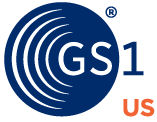- 1D vs 2D Barcodes 2025-07-25 Barcodes are crucial for tracking logistics & verifying product authenticity. We break down the differences between linear 1D versus 2D barcodes.
- 2D Barcodes 2025-08-18 A 2D or two-dimensional square barcodes appears as a small matrix grid made up of dark and light spaces. When scanned, these barcodes provide information about products, their details, origin, and where they’ve been. They can exist on retail products, as well as on healthcare devices and medications.
- Barcodes for Cosmetic Products | GS1 US 2025-08-14 Discover how GS1 US GTIN barcodes help cosmetic brands gain credibility, streamline inventory, and expand into retail and online marketplaces. Learn why using GS1‑issued barcodes is essential for cosmetics—including recall traceability and verification by major retailers
- Barcode Types 2025-08-15 Learn the types of barcodes available from GS1 US & determine which barcode type you need to meet any regulations & improve your business' supply chain.
- Create a Barcode 2024-05-06 Use Data Hub to create and generate barcodes for your products. GS1 US barcodes are accepted globally in store & by all major online ecommerce sites
- EAN Numbers and UPCs 2024-05-22 What's the difference between EAN numbers and UPCs? While their format is similar, EAN codes and UPCs have a few key differences. Read our guide to learn more.
- Getting Started with EDI 2024-08-28 Learn about implementing EDI (Electronic Data Interchange) to your systems so they use message standards to ensure everyone uses a common language.
- Serialized Shipping Container Codes (SSCC) | GS1 US 2025-06-10 An SSCC number is an 18-digit identifier assigned to a logistics unit, which includes any combination of trade items, such as cases, pallets, etc., packaged together for transportation purposes. It acts as a license plate to identify and track shipments through the supply chain.
- UPC Codes 2025-08-15 Explore GS1's Guide to UPC Codes and learn what is a upc code, the difference between a sku vs upc, how to get a UPC code, & more.
- What is a 3D Barcode? | GS1 US 2024-08-13 You can improve the traceability and security of your products with 3D barcodes. Read our guide to learn more about what 3D barcodes are and how they work.
- What is a GS1-128 barcode? 2024-05-06 GS1-128 Barcodes can carry all of the GS1 Identification keys beyond just the Global Trade Item Number (GTIN). These include Global Location Numbers (GLNs) for identifying parties and locations, Serialized Shipping Container Code (SSCC) to identify logistic units such as cases, pallets, or shipping containers, and GS1 asset Identifiers, and more. Working together, they help identify your products as they travel throughout the supply chain.
- What is a GS1 Company Prefix? 2025-03-15 Learn the importance of a unique GS1 company prefix and how to get a prefix as a first step toward barcoding your products.
- What is a GS1 DataBar? | GS1 US 2024-08-13 Get a unique GS1 DataBar to track products through the supply chain. Each DataBar holds a GTIN with additional attributes like serial numbers, weight, etc.
- What is a GTIN? 2025-08-15 Learn about what a Global Trade Item Numbers (GTINs) is, how GTINs are used both in store & for ecommerce, and the difference between a GTIN vs UPC.
- What is an ITF-14 Barcode? | GS1 US 2025-08-27 What's the difference between an ITF-14 barcode and a UPC? We can teach you how to identify an ITF-14 code and how to use it to manage your supply chain.
- What is a QR Code 2024-07-03 A QR Code is a two-dimensional (2D) variation of a traditional linear barcode. Linear barcodes that we see on products in stores are UPCs. Manufacturers have used these for over fifty years to uniquely identify products. Yet, one-dimensional printing limits them.

